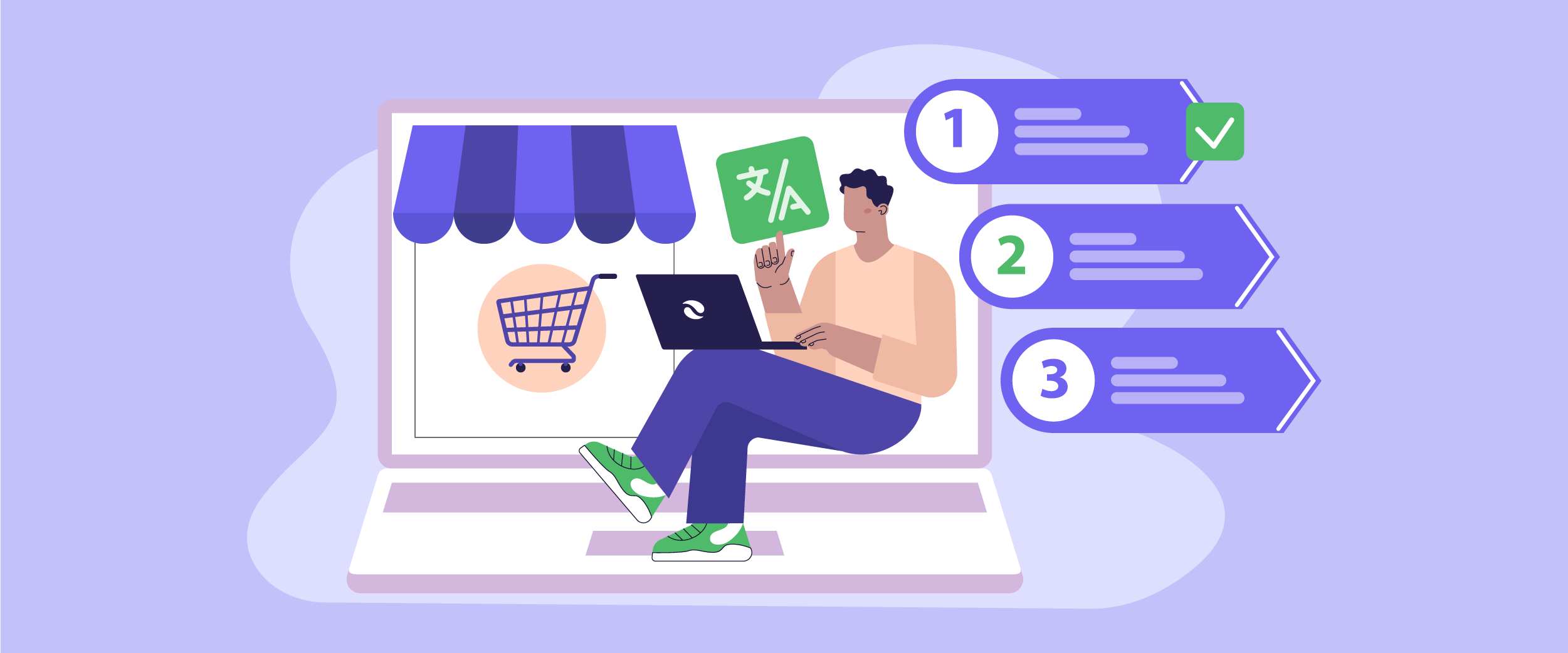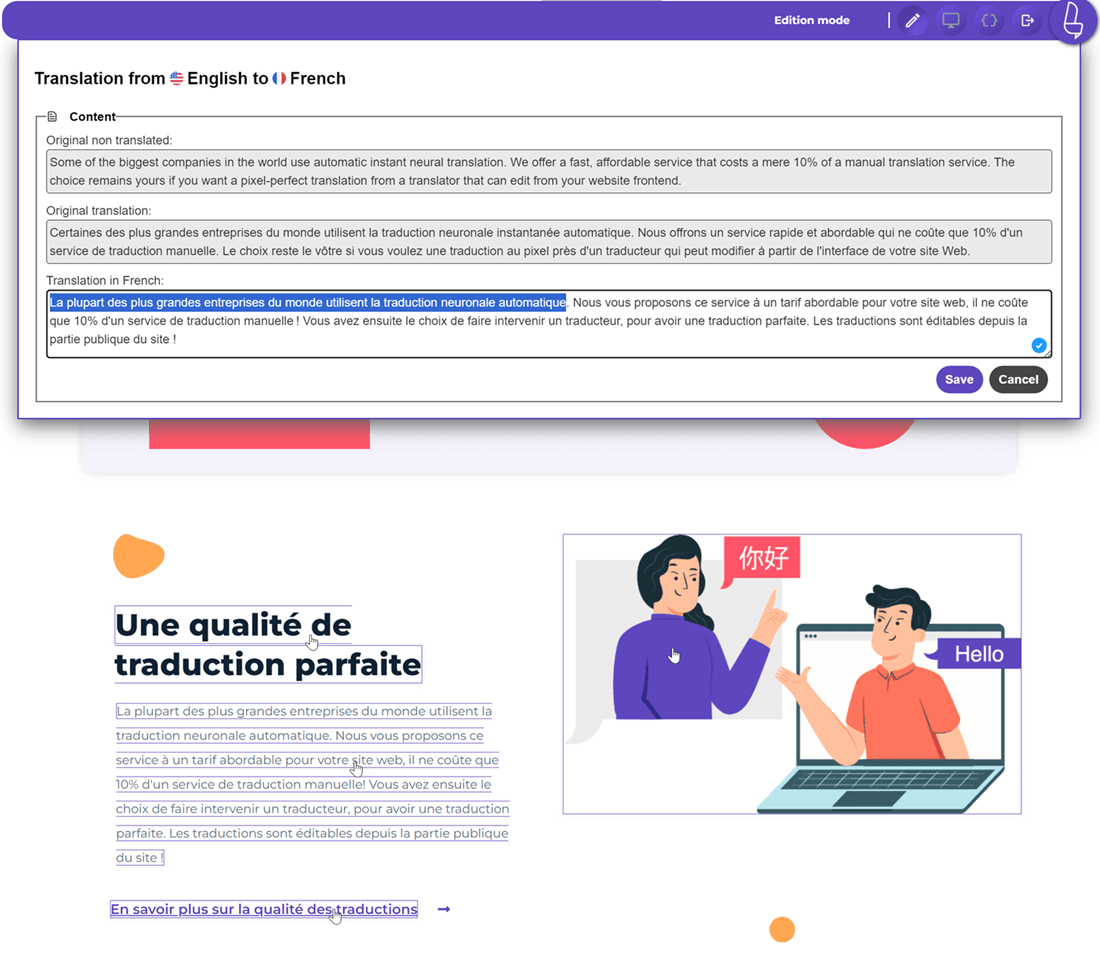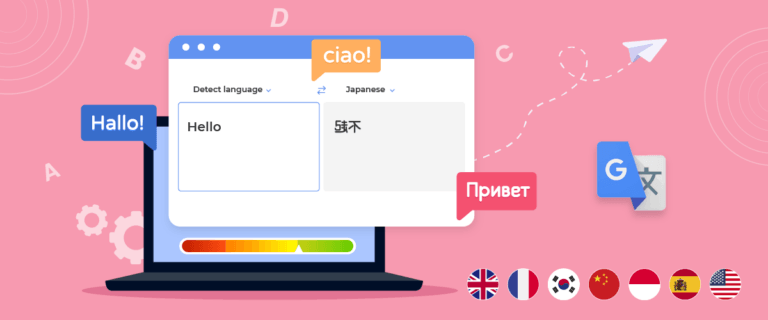Taking a small business beyond local borders is something many can actually achieve with the right approach. The internet has leveled the playing field, giving even the smallest brands a chance to reach customers across countries and cultures. With a well-planned website translation strategy, your products, services, and stories can connect with people who speak different languages, turning curiosity into trust and local visitors into global customers.
But knowing where to begin is often the hardest part. Which languages should you focus on first? How can you make the most of a limited budget? And how do you ensure your translated website still sounds like you? This guide breaks the process into a simple, week-by-week roadmap built for small businesses.
Why translation matters for small businesses?

When a small business translates its website into another language, it’s creating a bridge that allows people across the world to feel that the brand truly speaks to them. According to a survey by The Translation People, 75% of business owners reported increased international sales and conversions after localizing their materials, including websites—into their target audience’s language.
In practical terms, translation has a tangible impact. Visitors who browse content in their native language tend to stay longer on the site, better understand the products or services, and are more likely to take action—whether it’s making a purchase, signing up, or reaching out. Studies have also shown that consumers prefer to buy from websites available in their own language rather than English-only sites.
From a visibility and SEO perspective, offering localized website versions can open doors to markets previously inaccessible due to language barriers. Only about 25% of global internet users primarily speak English, meaning the vast majority communicate in other languages. By translating their site, small businesses can dramatically expand their potential audience.
In short, for small businesses looking to grow from local to global, website translation is a strategic key to standing out in international markets.
Preparing your business for translation

Successful translation starts with a clear sense of direction, understanding why you’re doing it, who you’re trying to reach, and how much you can realistically invest. These early steps help you avoid unnecessary costs and ensure every effort supports your long-term growth.
Define goals
Every translation project needs a purpose. Are you trying to attract more international traffic, boost sales from specific regions, or simply make your brand more inclusive? Defining clear goals helps you focus your resources where they’ll have the greatest impact. For example, if your main goal is to increase sales, you might prioritize translating product pages and checkout processes first.
Without clear goals, it’s easy to spread your efforts too thin, translating everything without knowing what truly matters. When you know your objectives, you can measure success more effectively and adjust your strategy as your business grows. Think of your goals as a roadmap: they tell you where to start, how far to go, and what “success” looks like for your brand.
Choose target languages
Not every language will make sense for your business, and that’s okay. The best approach is to identify where your current or potential customers are. Use tools like Google Analytics or social media insights to see where your traffic comes from and what regions show the most engagement. Starting with one or two key languages is often better than trying to translate everything at once.
Choosing the right language also means thinking about culture, not just geography. For instance, Spanish can reach audiences in Spain, Mexico, and parts of the U.S., but tone and phrasing may vary by region. Understanding these nuances helps you create translations that feel authentic, not generic.
To make smarter choices, focus on high-impact languages, those that offer the greatest growth potential for your market. These are languages spoken in regions with strong purchasing power or high online engagement, helping you reach audiences that truly drive business results
Plan your budget
Translation does require planning. Start by deciding how much you can allocate each month or quarter to translation and related tasks, such as editing, reviewing, or design adjustments. Tools like AI-assisted translators can reduce costs, but it’s often worth combining them with human review for accuracy and brand consistency.
A good rule of thumb is to start small—translate your most visited or highest-converting pages first. As you see results, you can reinvest in expanding language coverage. A clear budget helps you stay consistent over time and prevents translation from becoming a one-time effort that quickly goes outdated.
Creating your translation roadmap

Once you’ve prepared your business, it’s time to put a plan into action. A clear, week-by-week roadmap makes the translation process manageable and ensures that each step moves you closer to reaching international audiences. Breaking the work into small phases prevents overwhelm and helps you stay on track, even with limited resources.
Week 1–2: Audit content

Start by reviewing your existing website content to decide what really needs translation. Identify your most important pages, such as product or service pages, pricing, and contact information, since they have the greatest impact on customers. Take note of content that can be updated, removed, or simplified to make translation easier and more effective.
Create a content inventory or checklist so nothing is overlooked. This audit will serve as the foundation for your translation plan, allowing you to prioritize pages based on traffic, conversions, and relevance to international users.
Week 3–4: Select translation method

Next, decide how you will translate your content. There are a few approaches: using professional human translators, AI-assisted tools, or a combination of both. Human translation ensures accuracy and cultural nuance, while AI tools can save time and reduce costs for large volumes of content.
For small businesses looking for a practical solution, translation tools like Linguise offer a smart balance, combining AI translation with an easy way for humans to review and refine content. This allows you to quickly translate pages, such as blog articles or product descriptions, while keeping the language natural and on-brand. By using a tool like Linguise, you can save time, control costs, and maintain high-quality translations without needing a full team of translators.
Week 5–6: Translate and review

Now it’s time to start the actual translation. Begin with the highest-priority pages identified in your audit. Ensure translators or tools have access to style guides, glossaries, and branding guidelines to maintain a consistent tone across languages.
After translation, review the content carefully. Look for errors, awkward phrasing, or sections that don’t convey your brand’s voice. Having at least one native speaker or professional editor review the translation helps ensure it reads naturally and communicates your message effectively.
Week 7–8: Test with user

Before going live, test your translated website with actual users from your target audience. Ask them for feedback on clarity, usability, and overall experience. This step helps you catch cultural or linguistic issues that might not be obvious to translators.
Collect feedback systematically and prioritize changes that affect comprehension or user confidence. Testing with users ensures your website is not only translated correctly but also effective in engaging and converting visitors.
Week 9–10: Launch & optimize

Finally, publish your translated pages and monitor performance closely. Check metrics like traffic, bounce rate, and conversions to see how international users respond. Use this data to identify areas for improvement and make updates as needed.
Optimization is ongoing, small adjustments based on user behavior and feedback can significantly enhance the effectiveness of your translation. By following this roadmap, you can confidently launch a multilingual website and continue improving it as your global audience grows.
Maintaining translation quality over time

To ensure your website remains effective for international audiences, you need strategies that keep your content consistent, clear, and aligned with your brand over time.
Keep a consistent voice
A consistent brand voice helps users immediately recognize your business, no matter the language. For example, if your English website uses friendly, conversational language, your Spanish or French pages should reflect the same tone. Consistency builds trust and makes your brand feel reliable across regions.
Small businesses can achieve this by creating guidelines for tone, terminology, and phrasing that translators or tools must follow. Even minor inconsistencies, like switching between formal and casual language, can confuse users or reduce engagement.
Use style guides
Style guides and glossaries are essential tools for maintaining quality. They outline preferred terminology, spelling, punctuation, and formatting rules for each language, helping translators and AI tools stay on track. For instance, a glossary can specify that “checkout” should always be translated as “pago” in Spanish e-commerce pages, avoiding variations that could confuse customers.
By documenting these rules, you make it easier for anyone, human or AI, to produce translations that match your brand’s standards. This also reduces time spent on revisions, keeping your workflow efficient.
Combine human insight with AI
AI translation tools are fast and cost-effective, but they can miss subtle cultural or contextual nuances. Combining AI with human review ensures translations are accurate, natural, and engaging. For instance, a product slogan translated by AI might be technically correct but feel awkward to native speakers; a quick human edit can fix it while keeping the workflow efficient.
Using tools like Linguise, which offer a front-end live editor, allows teams to make human adjustments directly on the website while previewing changes in real time. This hybrid approach, AI translation plus live human editing, saves small businesses time and money, ensures high-quality translations, and lets teams focus on strategy and growth rather than manual corrections.
Measuring success and scaling gradually

Below are three key phases to help you measure performance and scale your multilingual presence realistically.
Track Key Performance Indicators (KPIs)
Start by defining which metrics really matter to your translation project. For instance, how much of your traffic is coming from the new language version, what’s the bounce rate compared to your original page, and what percentage of visitors complete a goal (like a purchase or sign‑up) via the translated version. Tracking these gives you clear signals about what’s working and where you might need to tweak.
When you roll out your translated content and set up dashboards or reports that pull language‑specific data, over time you’ll see patterns, maybe one language drives a lot of traffic but low conversions, while another has fewer visitors but higher engagement. These patterns guide your next steps.
Analyze performance
Once the data is collected, set aside time to examine it carefully. Look beyond raw numbers, for example, if your Spanish version has many visitors but a high bounce rate, it could mean the translation is too literal or the cultural context doesn’t resonate. Maybe the calls to action aren’t tailored to that audience.
Use the insights to refine your translation and localization strategy. Adjust phrasing, imagery, or even user flows for that language audience. Over time, this makes your translated site stronger and more tailored, rather than a simple mirror of the original.
Expand language
Choosing which languages to add is best done after you’ve proven the model. One helpful guide, look at the most spoken languages in the world, like English (with over 1.4 billion total speakers), Chinese (1.1 + billion total speakers), Hindi (600 + million), and Spanish (559 + million). That means if your business starts to see traction in one language, you might next prioritise one of these big‑audience languages to gain more reach.
But “big audience” doesn’t always mean “best fit.” Always check your web analytics to see which geographies are already visiting, interacting, or converting. That insight, combined with global speaker data gives you a smart prioritisation framework: you might choose a smaller but highly engaged language market over a larger but indifferent one, and scale accordingly.
Conclusion
Taking a small business from local to global is entirely achievable with a clear, realistic website translation roadmap. By preparing your business, defining goals, selecting target languages, and following a structured week-by-week plan, even resource-constrained businesses can reach new audiences, build trust, and increase international sales. Maintaining translation quality and continuously measuring success ensures your multilingual site remains effective and engaging over time.
To make this process easier, tools like Linguise combine AI-powered translation with human refinement, helping small businesses translate content quickly, accurately, and affordably. Starting to expand with Linguise can help your business grow globally.





